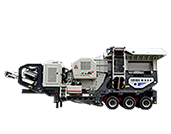A gypsum crusher is essential in the manufacturing process of gypsum-based products, such as plaster, drywall (gypsum board), and cement. Crushing gypsum rock into smaller particles ensures proper processing and quality control. Below are key aspects to consider when selecting or operating a gypsum crusher for manufacturing:
—
1. Types of Gypsum Crushers
Different crushers are used depending on the required particle size and production capacity:
- Jaw Crusher:
- Hammer Crusher:
- Impact Crusher:
- Cone Crusher:
- Roller Crusher:
- Raw gypsum rocks vary in hardness and size; select a crusher that matches your feed material.
- Final product fineness depends on downstream processes (e.g., calcination requires ≤30mm).
- Gypsum can contain up to 20% moisture. Wet/sticky material may require:
- Small-scale plants: ~5–50 tons/hour (hammer/impact crushers).
- Large-scale plants: ~100–500 tons/hour (jaw + cone/roller crushers).
- Gypsum dust is hazardous and can cause equipment clogging.
– Primary crushing of large gypsum rocks (up to 1-1.5m diameter).
– Output size: ~150-300mm.
– Suitable for initial coarse crushing..jpg)
– Secondary crushing for medium-hardness gypsum.
– Output size: ≤25mm (adjustable).
– Ideal for producing finer particles for calcination.
– High-speed rotor crushes gypsum into cubical shapes.
– Output size: ≤50mm (suitable for drywall production).
– Used for intermediate crushing with higher efficiency.
– Produces uniform particle sizes (~5-10mm) with low dust generation. 
—
2. Key Considerations for Manufacturing
When choosing a gypsum crusher, consider:
(a) Feed Size & Output Requirements
(b) Moisture Content
– Pre-drying before crushing.
– A crusher with anti-clogging features (e.g., hammer mills with grate bars).





Leave a Reply